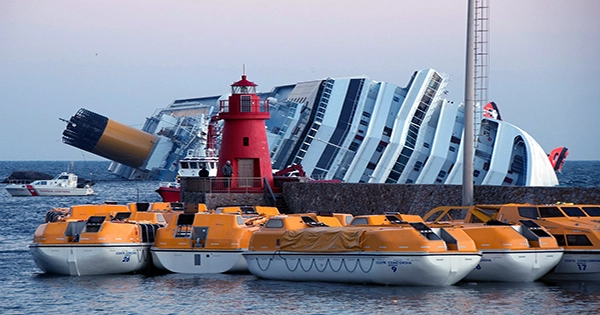The CS Mackay-Bennett left Halifax, Nova Scotia in 1912 with the mission of retrieving corpses from the Titanic’s wreckage. Following the accident, the ship was rapidly converted into a “morgue ship,” equipped with 100 coffins, all of the embalming fluid in Halifax, and 100 tons of ice to preserve remains in transport. It wasn’t sufficient.
The team discovered a lot more bodies than they had anticipated, the majority of which were floating in frigid water while being partially supported by life jackets. Captain Lardner informed the press that many of the deceased had been buried at sea since they had been unable to bring all 190 victims of the Titanic accident back to land. According to Lardner’s statement to the Washington Times, “most of them were crew members, and we couldn’t care for them.”
“All of the embalming fluid in Halifax was transported aboard the ship as we departed. Only 70 corpses could have been cared for with that. We weren’t expecting to uncover so many dead, much alone so many of them. Since we anticipated being at sea for more than two weeks, we had to bury the dead because the mortician estimated they wouldn’t survive more than three days. Before they were put to sleep, they received all of the appropriate funeral services.”
A sea burial was performed for around one-third of the 337 total remains that were rescued from the disaster by the CS Mackay-Bennett and three other recovery ships, with any personal items taken to help identify the deceased. Even if there was a service earlier, it was not random who was taken home for burial and who was cast off.
Sociologist Jess Bier noted in a study of the forensic identification procedure following the disaster that decisions about which bodies to bury at sea were “largely made according to the perceived economic class of the recovered victims, and those with third-class tickets were far more likely to be returned to the water.”
The remains were embalmed and placed in coffins; they were assumed to be first-class travelers based on their attire, demeanor, and effects. Passengers in the second class were embalmed but wrapped in canvas. Not embalmed, the third class were instead kept in canvas in preparation for burial at sea. According to Bier, “the recovery personnel effectively determined which remains were valuable enough to be kept and which would be allowed to swiftly rot underwater” as they divided the dead according to perceived economic status.
The decision was made in part for financial considerations. He reasoned that the wealthier passengers were more likely to have insurance or have inheritance that would need to be paid out because life insurance, a relatively new sector, would not pay out without the presence of a corpse. At the time, Captain Lardner said, “No distinguished man was recommitted to the depths.” “It seemed better to make certain to send the deceased back to land where the death may give rise to such concerns as expensive insurance and inheritance and all the litigation,” one author said.
Bier’s choices were motivated by deeply established ideas of class, which were all too obvious on board the Titanic both before and after it struck the iceberg. “[Class] disparities were thought to be a normal element of society,” she said, “from the reports that some steerage passengers were imprisoned below decks to the overwhelming superior prospects of survival for first-class passengers.”
Class distinctions were also made when the captain and his crew searched for physical indicators that a body may be recognized. For instance, upper class persons were more likely to carry business cards identifying themselves and their firm or to wear garments with their initials embroidered in.
Crew were 36 percent more likely than other passengers to be buried at sea, and third-class passengers were 46 percent more likely to join them, of the remains uncovered by the “death cruises,” as they were referred to by the press at the time. The likelihood of bringing second-class passengers to shore was increased by 69%. Only one higher class body was interred at sea out of all the bodies that were found.
















